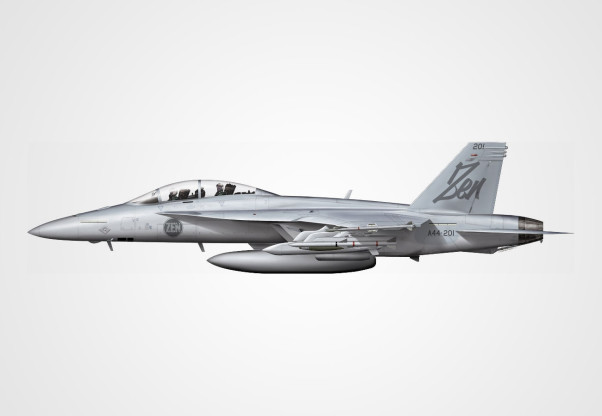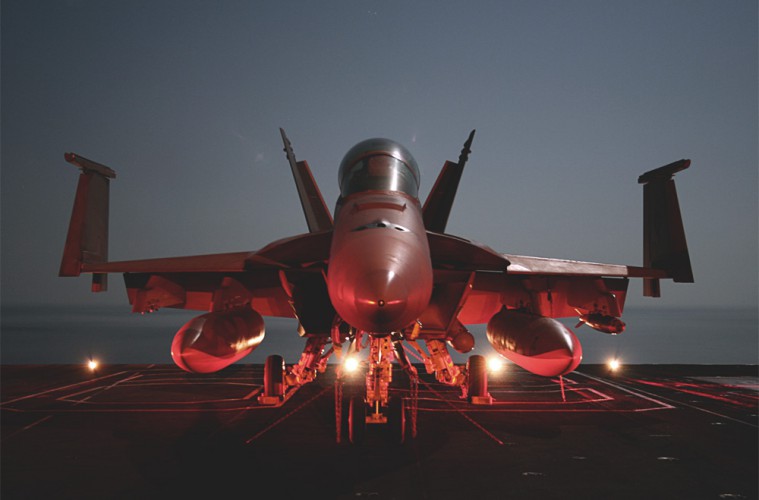Good with cars? Why not work on planes?! There’s been insane advances in automotive technology over the past few years, today’s automotive mechanics have to be modern day geniuses in order to keep up with the maintenance and repair of such complicated machinery. So you thought working on cars was challenging? Why not consider a next level role in the Air Force?!

Introducing the F/A-18F Super Hornet.
The F/A-18F Super Hornet is a twin-engine carrier-based multirole fighter aircraft built by Boeing Defense, Space & Security. Its top speed is 1,960 km/h – about 5 times the top speed of a Formula One car. Its avionics systems are far more sophisticated than any electronic or data logging systems used in premiere motor racing categories and features a vast array of weapons including Air-to-Air Missiles and Nose Mounted Canons.
The Royal Australian Air Force F/A-18F Super Hornet gives Australia an upgraded air combat capability for both air-to-air and air-to-ground mission until the full introduction into service of the F-35 Lightning II Joint Strike Fighter (JSF). The F/A-18F Super Hornets are larger than the classic model with many detail improvements. The aircraft’s increased wing area allows them to carry more stores further on their extra hardpoints. They are easily recognised by their rectangular air intakes.
SPEED – Modern jets like the Super Hornet have afterburners incorporated in their engines. This creates a very large increase in thrust by injecting fuel into the hot exhaust from the turbine engine. The exhaust gas still contains enough oxygen to burn the fuel, and the added expansion of gas from the burning fuel can add up to 50% extra thrust to the aircraft. Because the afterburner has very high fuel burn rates, it is only used sparingly in short bursts, such as during take-off or in air-to-air combat.
MANOEUVRABILITY – Leading Edge Extensions (LEX) are fillets added to the front of a modern fighter aircraft’s wings that provide greater manoeuvrability. As the plane increases the sharpness of a climb or turn, a high-speed vortex is generated that remains attached to the top of the wing. The wing now has a low-pressure zone on top, and continues to generate lift past the point where it would normally stall.
Unlike older style aircrafts that rely on mechanical or hydraulic control systems, the Super Hornet uses a clever combination of computers and electrical linkages, making it agile and reliable. It’s what is known as ‘fly-by-wire’ technology. These new systems can also respond more flexibly to changing aerodynamic conditions, prevent a stall or stop the pilot from overstressing the airframe. It also features as a digital flight-control system that detects and corrects for battle damage.
Air Force has 24 F/A-18F Super Hornets, which will ensure that Australia’s air combat capability edge is maintained until the full introduction into service of the planned F-35A Joint Strike Fighter.
The Air Force’s fleet of aircraft are truly amazing machines, fitted with components like afterburners, electronic fly-by-wire systems for controlled handling and Leading Edge Extensions on the wings for greater manoeuvrability. And have the cutting edge aviation communications systems to match, including a GPS network which can navigate aircraft and track potential targets anywhere in the world. If you think you’re an expert with cars why don’t you rise to next level with a challenging role with the RAAF.

Be an Avionics Technician: http://www.defencejobs.gov.au/airforce/jobs/AvionicsTechnician/JobDetails
Looking for a trade with a difference? Then a career as an Avionics Technician is for you. You’ll maintain a wide range of electronic, oxygen and weapons systems on board Air Force fighter, strike, surveillance and transport aircraft. For more information, click HERE.

Be an Aeronautical Life Support Fitter: http://www.defencejobs.gov.au/airforce/jobs/AeronauticalLifeSupportFitter/JobDetails/?entryTypeId=11
The RAAF also have on offer an exciting opportunity to be a part of a large Australian organisation maintaining life support equipment aboard a variety of aircraft. As an Aeronautical Life Support Fitter you will maintain the aircraft mounted and aircrew mounted aeronautical life support equipment and safety and survival equipment within the Air Force. The Aeronautical Life Support Trade is to ensure that aeronautical life support equipment utilised within the Defence environment is correctly fitted and maintained to ensure operational airworthiness and mission capability. Aeronautical Life Support Fitters are also responsible for conducting aircrew and passenger training on the application of aeronautical life support equipment. For more information, click HERE.
Going for a job in the Air Force is probably something many haven’t ever thought about, truth is it’s probably more something certain people would dream about. As a member of the Air Force you can make a genuine difference to people’s lives, responding to natural disasters and other emergencies, within Australia and overseas, through peacekeeping missions and deployments. Helping small groups or even entire communities to rebuild their lives is an incredibly rewarding experience and one you’ll be glad to be a part of.

